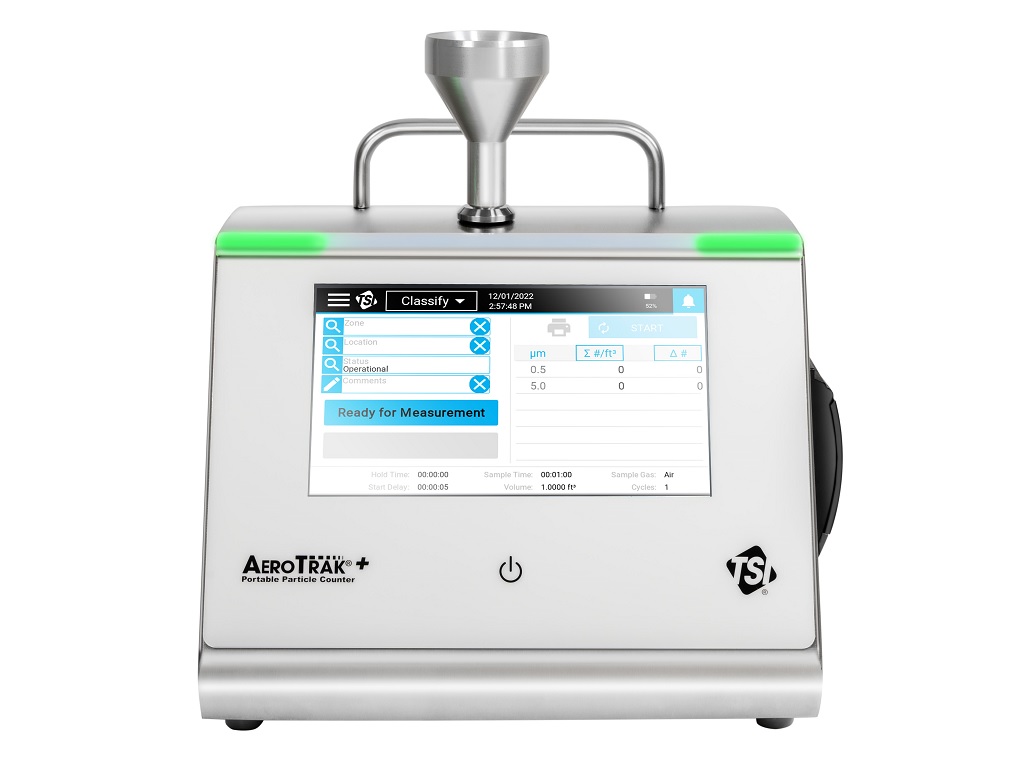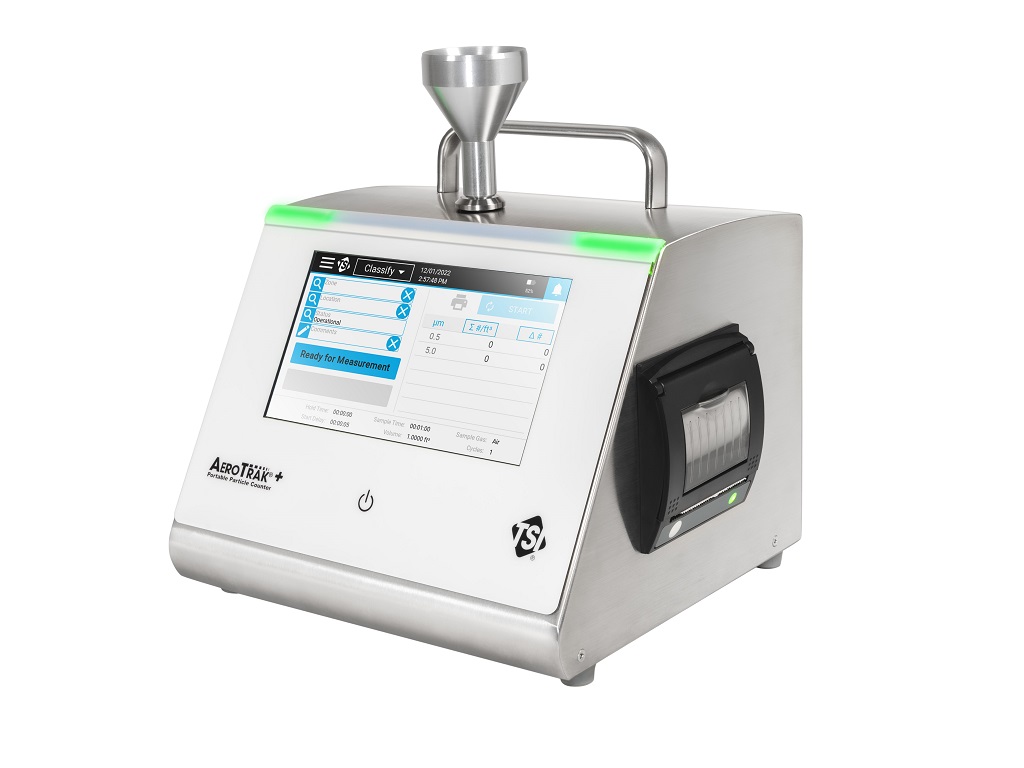
Nanoparticle counters are specialized instruments used to measure and analyze particles in the nanometer size range. These instruments are used in a wide range of industries including nanotechnology, biotechnology, and environmental monitoring. Nanoparticle counters are designed to measure the concentration and size distribution of nanoparticles in a sample, making them essential for studying the properties and behavior of these small particles. These instruments are highly sensitive and accurate, providing real-time data on particle size and concentration, which is crucial for ensuring the safety and quality of products and processes in various industries.



A nanoparticle counter is an instrument designed to measure and analyze the number and size distribution of nanoparticles in a sample. It uses a variety of detection methods such as light scattering, electrical sensing, and microscopy to detect and count individual nanoparticles in a range of sizes, typically from a few nanometers up to 1 micrometer.
Nanoparticle counters work by detecting and measuring particles in the air using light scattering technology. The air containing particles is drawn into the counter and passed through a laser beam. The particles in the air scatter the laser light, and the scattered light is detected by a detector. By analyzing the intensity and frequency of the scattered light, the counter can determine the number and size distribution of particles in the air.
There are different types of nanoparticle counters available in the market, including condensation particle counters (CPCs), differential mobility analyzers (DMAs), scanning mobility particle sizers (SMPSs), and optical particle counters (OPCs). Each type of nanoparticle counter operates differently and has its own advantages and limitations depending on the specific application.
Nanoparticle counters have a wide range of applications in various industries and research fields. They are used in air quality monitoring, indoor air quality assessment, occupational health and safety, pharmaceuticals, electronics, and environmental research, among others. Nanoparticle counters can be used to detect and measure particles in the air, such as those produced by combustion engines, industrial processes, or in laboratories. They can also be used to measure the size distribution of nanoparticles in order to assess their potential health effects. In the pharmaceutical industry, nanoparticle counters are used to evaluate the size and number of drug particles, while in electronics they are used to measure the size and distribution of particles in semiconductor manufacturing.
The benefits of using nanoparticle counters in research and industry are numerous. Nanoparticle counters provide accurate and reliable measurements of particle size, concentration, and distribution, which are critical parameters for understanding and controlling many industrial and biological processes. With their high sensitivity and ability to detect particles in real-time, nanoparticle counters are essential tools for quality control in the manufacturing of nanomaterials, pharmaceuticals, and medical devices. They are also used extensively in environmental monitoring, where they can detect and quantify airborne particles that may be hazardous to human health. Nanoparticle counters can aid in research and development of new materials and technologies by providing important data on particle behavior and interactions. Additionally, nanoparticle counters are user-friendly, portable, and offer fast and efficient data analysis, making them an invaluable tool in many fields.
Nanoparticle counters can provide highly accurate measurements of the number and size of nanoparticles in a given sample. The accuracy of a nanoparticle counter can depend on various factors such as the type of sensor technology used, the calibration process, and the environmental conditions during measurement. However, many modern nanoparticle counters can achieve accuracy within a few percentage points, which makes them an essential tool for precise measurements in research and industry.
When choosing a nanoparticle counter, several factors should be considered such as the size range of particles to be measured, the concentration range, the required measurement frequency, the measurement environment, the portability and ease of use, and the cost. Other factors may include the type of detection technology used, the accuracy and precision of the measurements, and the availability of software and data analysis tools. It is important to select a nanoparticle counter that is appropriate for the intended application and that meets the required specifications for sensitivity, resolution, and accuracy.
The maintenance requirements for nanoparticle counters depend on the specific model and manufacturer. In general, regular cleaning of the instrument and calibration checks are necessary to ensure accurate measurements. Some nanoparticle counters may require more frequent cleaning or replacement of certain parts such as the laser or detector. It is important to follow the manufacturer’s recommendations for maintenance and calibration to ensure the instrument remains in good working condition. Additionally, regular software updates may be necessary to maintain compatibility with operating systems and to ensure any bugs or glitches are addressed.
Nanoparticle counters should be calibrated on a regular basis to ensure accurate and reliable measurements. The frequency of calibration depends on several factors, such as the type and model of the instrument, the frequency of use, and the requirements of the application. In general, it is recommended to calibrate nanoparticle counters at least once a year, or more frequently if the instrument is heavily used or if the application demands high accuracy. Regular maintenance and calibration can help to ensure the long-term performance and reliability of the instrument.
Great summary of the safety considerations when working with nanoparticle counters! It is important to note that nanoparticles may be harmful to human health and therefore must be handled with care. It is also recommended to follow any relevant regulations and guidelines related to working with nanoparticles in the particular industry or research field.
When choosing a nanoparticle counter, consider factors such as the particle size range of interest, the required sensitivity and accuracy, the sample volume, and the desired output format. It is also important to consider factors such as ease of use, maintenance requirements, and cost.
With a mission to provide trusted measurement, application guidance, and data analytics solutions, TSI is committed to helping its customers make informed decisions. The company’s vision of creating a better world by protecting people, products, and the environment speaks to its dedication to making a positive impact in the world. With TSI’s innovative products and focus on quality, we are confident that they are a valuable partner in our mission to protect what matters.
The TSI AeroTrak® Portable Particle Counter Model 9110 is a highly accurate instrument that can measure particles down to 0.100 μm using patented HeNe laser technology. It has a size range of 0.100 to 10.0 μm, up to eight channels of simultaneous data, and a flow rate of 1.0 CFM. The Model 9110 is designed for clean room monitoring, process tool monitoring, and filter test applications. It complies with all requirements of ISO 21501-4 and is the best choice for testing Class 1 and 2 Clean Rooms. The instrument features onboard reports for ISO-14644-1, EU GMP Annex 1, and FS209E, and external certification reports via TrakPro™ Lite Secure. It has data storage for 250 zones, 999 locations, and 10,000 samples, and can transfer data via USB, USB storage device, ethernet, and pulse outputs. The Model 9110 also features an industry’s loudest audible alarm, allows storage and recall of specific Recipes and Zone configurations, and displays up to three environmental parameters. It comes in a stainless steel enclosure and can seamlessly integrate with M32-01 manifold.
Tel +1 561-912-9809 / 561-9112-7201
E-mail [email protected]
6590 W Rogers Circle Suite# 11&12
Boca Raton – FL 33487
+1 561-912-9809 / +1 561-912-7201
[email protected]
6590 W Rogers Circle, Suite #11&12
Boca Raton, FL 33487